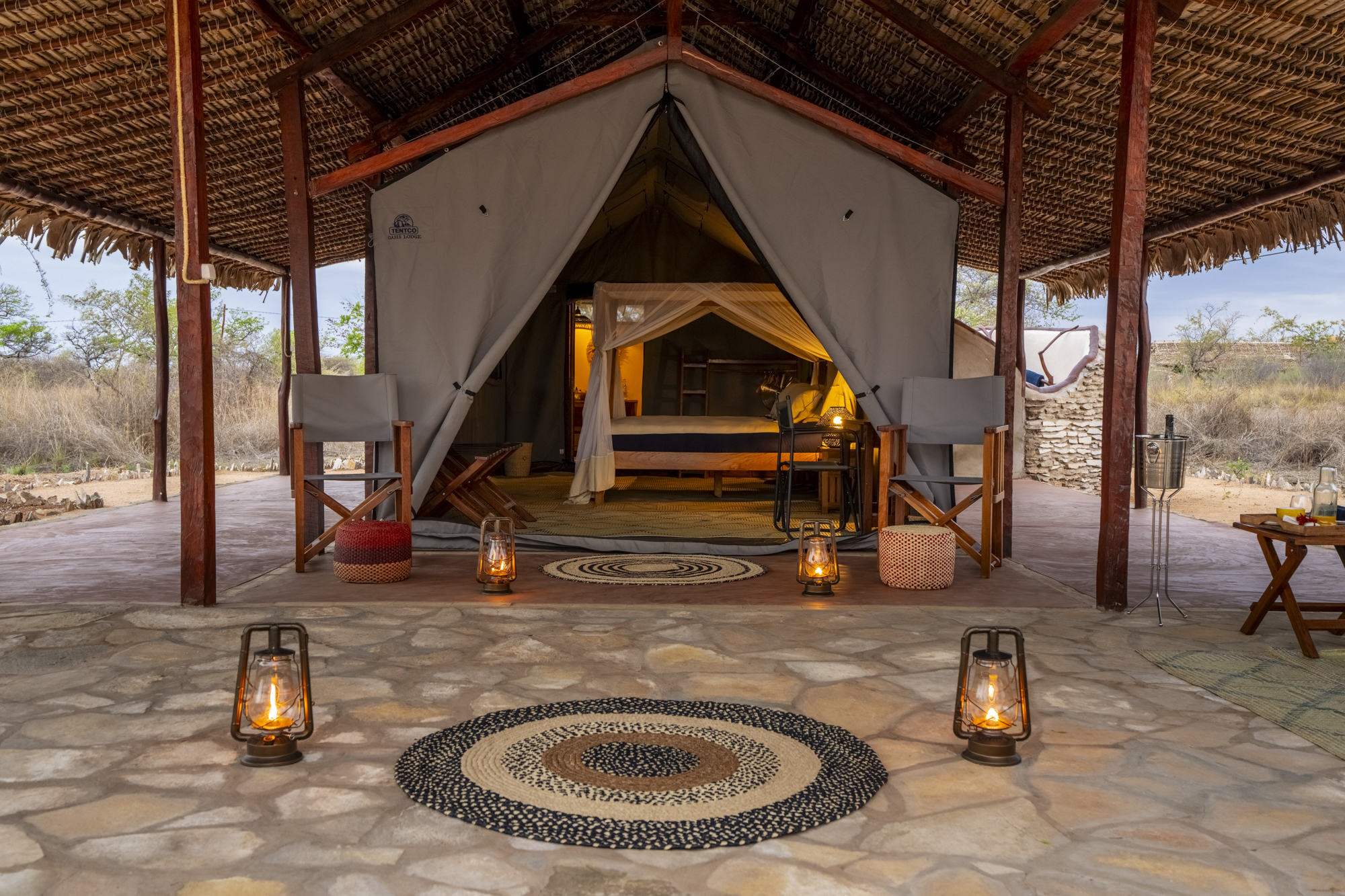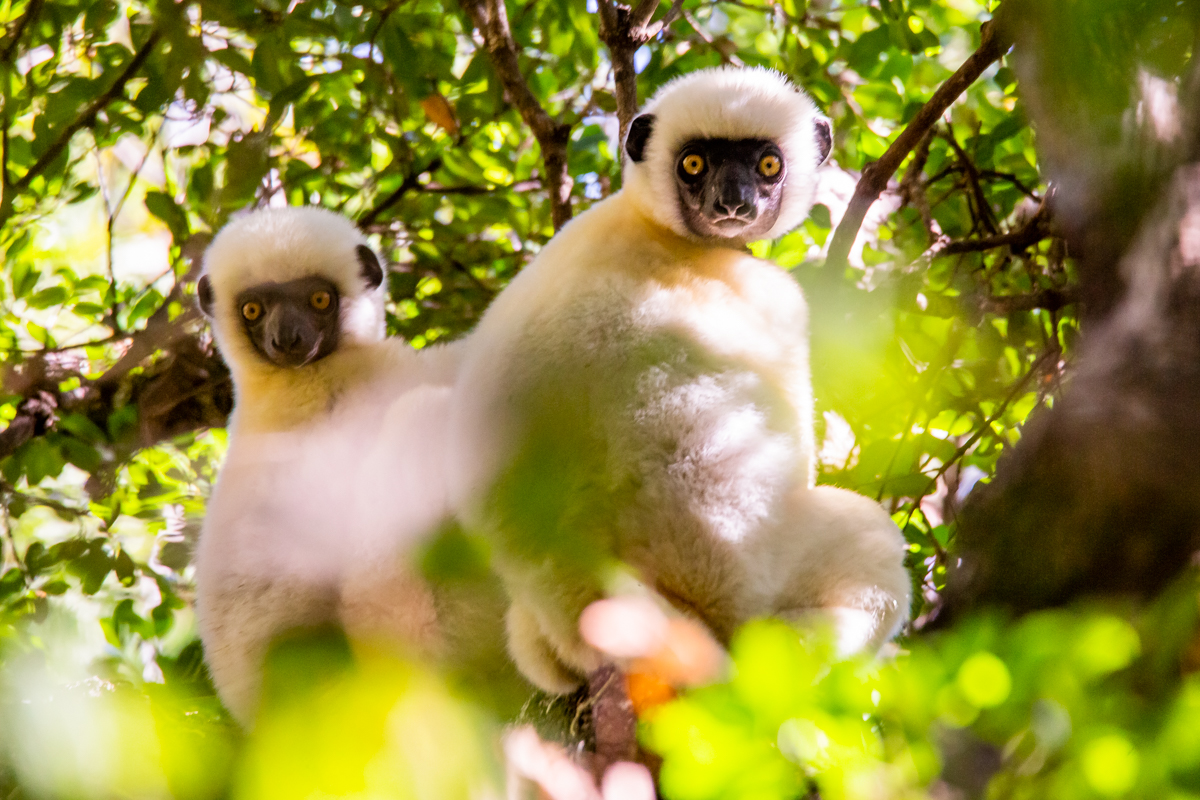1. Could you give us an overview of Madagascar Classic Collection and its role in promoting Madagascar as a high-end ecotourism destination?
My business partner and I launched Madagascar Classic Collection in 2007, opening our first camp that July. My background was in high-end safari tourism in East and Southern Africa, Kenya, Tanzania and a stint in Zimbabwe, so we initially tried to replicate luxury mobile camping in Madagascar. Very quickly the realities of road infrastructure made it clear that mobile operations weren’t viable. After our first mobile setup, we pivoted within six months to permanent camps; the second site, Mandrare River Camp, became fixed almost immediately.
From the outset our aim has been to reach truly remote, rural corners of Madagascar, places with no other tourists, and help protect those habitats by bringing in a small number of high-value guests and ensuring strong community buy-in. In the far south, around Mandrare, our nearest hotel neighbor is about 50 kilometers away. We built our own airstrip roughly one to two kilometers from camp so guests can fly directly from Antananarivo, stay three to five nights, and explore landscapes that are largely community-managed rather than formal national parks. That model, community inclusion and benefits first, reduces conflict and makes conservation practical on the ground.
Over time we grew a substantial ground-handling business as well, serving leading tour operators from around the world, names such as Abercrombie & Kent, Wilderness Safaris and andBeyond, when they send guests to Madagascar. COVID forced a full shutdown in 2020; we mothballed Manafiafy Beach & Rainforest Lodge and are now planning to reopen it next year. Two years ago we began building our newest property, a camp at Namoroka National Park in the northwest. It’s a pristine, little-visited park; we’re the only operator there, working closely with local communities and environmental NGOs to ensure protection goes hand-in-hand with access.
2. What makes Madagascar unique compared to other African and Indian Ocean destinations, and how do your lodges reflect that uniqueness?
Madagascar holds roughly five percent of the planet’s biodiversity, one in twenty species on Earth is here and nowhere else. Endemism is the rule, not the exception. Then within the country there are micro-regions that are even more unique. Take our Mandrare site in the spiny forest: across taxa, endemicity runs above 90 percent. Much of what guests see there is not only endemic to Madagascar; it’s endemic to that region.
So our collection is intentionally placed in settings that are unique even by Malagasy standards, think bizarrely beautiful baobab and octopus trees, extraordinary chameleons and birds, and lemurs galore (Madagascar has over 115 lemur species). Compared to mainland Africa, the wildlife here is entirely different. Compared to other Indian Ocean destinations, Madagascar is a biodiversity megahotspot rather than a “beach-with-some-nature” destination. You could spend a month here and never set foot on a beach and still have a world-class nature holiday, or you could spend a month island-hopping by boat from Nosy Be up toward Diego Suarez and scarcely scratch the surface. That sheer variety is unusual, and our lodges are designed to showcase it with small footprint, high-touch experiences.
3. Sustainable tourism is increasingly important worldwide. How do you integrate conservation and community engagement into your operations?
It’s baked into where we go and how we operate. We deliberately pioneer in frontier areas so we can help set expectations from day one: tourism must benefit local people and protect the environment. At Namoroka, for example, we’re partnering with Wildlife Madagascar, linked to the San Diego Zoo community, to create a strong science and conservation foundation. We’ve built a research center that hosts master’s and PhD students from the University of Antananarivo alongside international researchers. They’re inventorying biodiversity, bats, herpetofauna, birds, lemurs, mapping threats and guiding management.
Every guest pays a conservation levy, €40 per person per day from next season. Those funds support direct projects and partner programs: reforestation, community training, protecting forests outside the park, and especially fire management. Bushfires are a huge issue; traditional pre-rain burns in grasslands can easily ravage forest edges if they escape. Training and response capacity make a tangible difference.
In the south around Mandrare we run practical livelihood projects. Our head of conservation leads a program converting waste from a nearby sisal plantation into charcoal briquettes; we’ve distributed several tons of clean briquettes locally. With ADES we’ve installed more than 350 efficient cookstoves, reducing pressure on fuelwood. The bigger picture is cultural: by setting a high standard early, communities learn to expect serious environmental and social commitments from any operator, not just us, and that raises the bar across the destination.

4. And your role in supporting biodiversity protection and Madagascar’s natural heritage?
Beyond funding and advocacy, we try to connect science with guests and communities. At Namoroka, the research center gives Malagasy scientists the infrastructure they need, power, water, accommodation, labs, and we drop them by vehicle into remote survey areas. In camp, they brief our guests in the evenings about their work. That exchange is powerful. Research is not glamorous or well paid in Madagascar, but when a doctoral student explains a species discovery to a CEO from New York or a family from Singapore and senses that genuine admiration, it’s incredibly motivating. Recognition matters, and it cultivates local pride in protecting heritage.
We’re expanding that model southward now, again, pairing field science with tangible community benefits and conservation finance. It’s a virtuous circle: knowledge informs protection; protection underpins the guest experience; guests fund more knowledge and protection.
5. How do you ensure tourism growth actually benefits local communities, through jobs, training and economic opportunity?
We prioritize Malagasy employment, each property has only one foreign staff member. Training is constant and, crucially, international. I send our guides to work stints in South Africa, Tanzania and Uganda. We also run exchanges, with Ugandan guides joining us in Madagascar later this year. The point isn’t just natural history knowledge; it’s delivery, how to craft a world-class guest experience. For example, sitting quietly with mountain gorillas for 45 minutes still requires narrative, timing and empathy to keep guests engaged. Those skills translate directly back home.
We promote from within. My head of operations started as a sous-chef in 2007, became head chef, then assistant camp manager, and now runs operations group-wide. Several staff who grew up without formal literacy now converse confidently in English with high-net-worth guests. Culturally, we’ve also bridged service expectations. Francophone and anglophone travelers often value different styles. We train for warmth, attentiveness and intuitive hospitality, the hallmarks of great service for discerning American, British or Australian guests, without losing Malagasy authenticity.

6. Tourism depends on infrastructure and accessibility. What are the current challenges and opportunities in air, road and hospitality infrastructure?
The opportunities are endless; the challenges are real. Road infrastructure has deteriorated markedly since the late 2000s. A drive I could push in 28 hours in 2008 can take 38–45 hours today. For mid-market tourism, that’s a serious constraint. At the high end, we mitigate by building our own airstrips and flying guests in, but that requires heavy upfront investment. We’ve had to become entirely self-reliant: paths in the national park done in partnership with Madagascar National Parks, new firebreaks, access roads, and airstrip rehabilitation, all on our tab. Power is 100 percent solar; we provide charging for community phones and lights, and improve roads to help villagers reach clinics and markets faster. So even when we build for tourism, communities benefit.
Air connectivity is improving but still fragile. We operate scheduled charter services to guarantee guest movements. The national carrier has had reliability issues in the past; trust will take time to rebuild even as management improves. More consistent regional links, especially to Nosy Be and Diego Suarez, would unlock significant growth.
7. How do you see Madagascar’s tourism market evolving, especially for high-value travelers seeking authentic experiences?
Momentum is building. The north has seen significant investment, Time + Tide’s Miavana is an obvious example, and Anjajavy has elevated its soft all-inclusive product. Major African safari brands are looking seriously at Madagascar, and I know Middle East investors are evaluating island projects in the archipelagos off the north.
There is urgency. Beach and marine experiences are robust and relatively stable; however, terrestrial wildlife depends on forests under pressure from deforestation. The wildlife proposition is superb now; it may be compromised in five to ten years if we don’t accelerate protection. I’m optimistic, we’re scouting Nosy Be for a presence and expect a surge in arrivals, but conservation must keep pace with development. With responsible investment, Madagascar can position itself for long-stay, high-value travel built on low-impact lodges and unique natural encounters.

8. Are you exploring partnerships with Gulf-based investors, airlines or hospitality groups, particularly from the UAE?
I have close contacts in Dubai’s tourism investment community and plan a trip around February or March to meet potential partners. Interest from the Gulf, capital and know-how, can be catalytic, especially in aviation links, resort development in the north, and sustainable hospitality models that fit Madagascar’s fragile ecosystems.
9. How are you diversifying your product, mixing luxury with adventure, wellness or cultural immersion?
The portfolio is inherently diversified. Mandrare River Camp is a blend of nature and deeply cultural experiences with Antandroy communities of the spiny forest. Namoroka is adventure and exploration, tsingy formations, caves, and little-known wildlife in a national park no one visits. When we bring Manafiafy Beach & Rainforest Lodge back online next year, that adds beach, snorkeling and coastal wildlife to the mix. Across all properties the common thread is small scale (8–10 units), high touch, and a sense of discovery.
10. Finally, what message would you share with Khaleej Times readers about Madagascar’s potential, and Madagascar Classic Collection’s role in shaping its future?
Madagascar’s potential is extraordinary, and the window is now. We helped introduce the African-style, small-camp, high-service model to truly remote Malagasy landscapes, and we’ve proven that it can fund conservation and transform lives locally. Low-impact lodges, eight to twenty keys, are the right fit for fragile habitats. There’s also space for larger, responsibly designed resorts in the right places, particularly on islands and coastal zones.
We welcome more players. Competition in a young destination is really co-marketing, together we grow the pie. Madagascar’s visitor numbers are still modest; a serious holiday here typically spans 12–15 days and three to four distinct regions, which spreads benefits nationwide. For investors and travelers in the Gulf, this is a chance to back a world-class conservation destination at an early stage, and to help ensure the biodiversity that makes Madagascar unique thrives for generations.